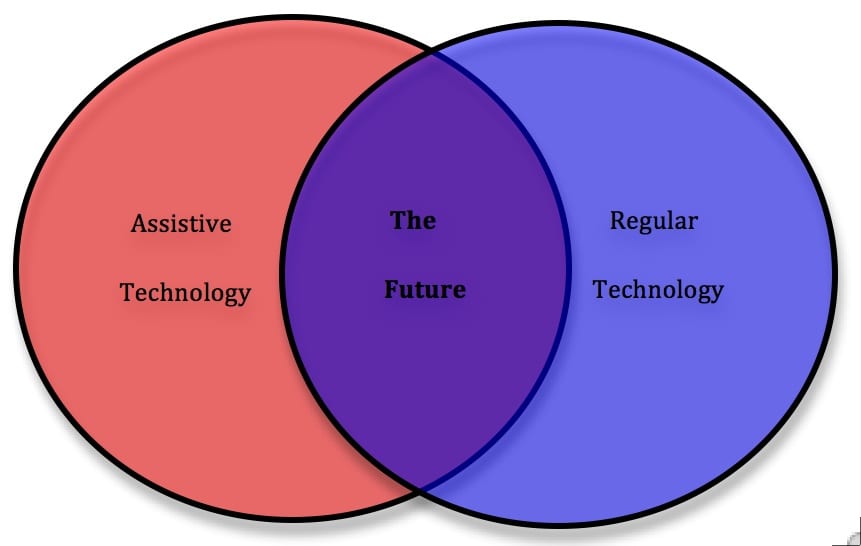I think that there is a misconception that assistive technology is only for people with disabilities. This picture is starting to change. As more and more “regular” tech is being used by people with disabilities (example – iPad) and as more “regular” people want to be able to access their technology in different ways (example – voice recognition) I am seeing a mashing of the two worlds. This has benefits for both groups. For people with disabilities, the cost of adaptation is coming down and more things are available off the shelf that are of great benefit. For able bodied people, some of the tech that is just coming to the forefront are things that people with disabilities have been using for years. I would even venture to say that there are some technologies out there that would not be if they had not first been developed for people with disabilities.
When I went to graduate school in 1999, voice recognition software cost $10,000 and it did not work that great. Now you can download a free app for your smart phone that is light years head of what that old software could do. I would venture to say that it has been people with disabilities that has kept voice recognition companies in business. I know they like to say that it is doctors and lawyers who are using their software, but I would be shocked if that is their biggest market. Back in the day it took hours of training to get a good voice file, and the only people who would be willing to go through all that work were people who had no other alternatives. Now, the training is much faster and the program is overall more user friendly.
Another example is EEG or “brainwave” technology. There are a couple companies out there developing brain-computer-interfaces (BCI) for gaming applications. One example is Emotiv. BCI research has been going on for over 30 years for military and disability applications, but these companies are designing products to be used by the general public. I think that in the next few years, the work of these mainstream companies and the research that has been done in the military and disability world will soon come together. I am very excited to see what will come of this. This is not the future this – is now! There have already been some developers that have hacked wheelchair controllers and communication systems with the commercially available hardware. So is this assistive technology or “regular” technology? The lines are blurring.
What will the next 10 years bring? All I know is that I will be watching and doing my best to keep up with what is out there so that I can help people do what they want to do.
Here is a great article that talks about assistive and regular tech’s affect on each other: The Evolution of Assistive Technology Into Everyday Products
Do you have any examples of “regular” tech and “assistive” tech coming together?

